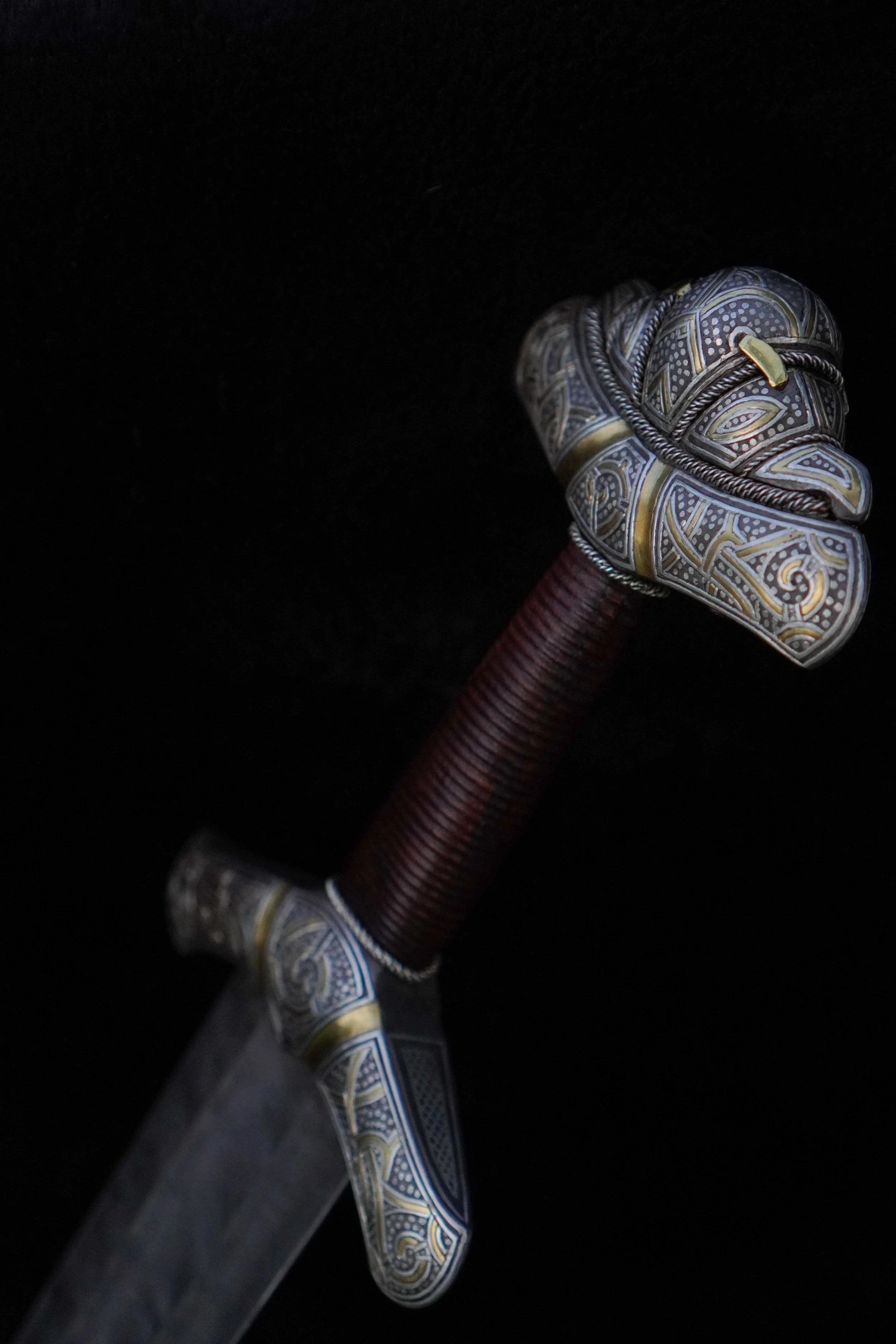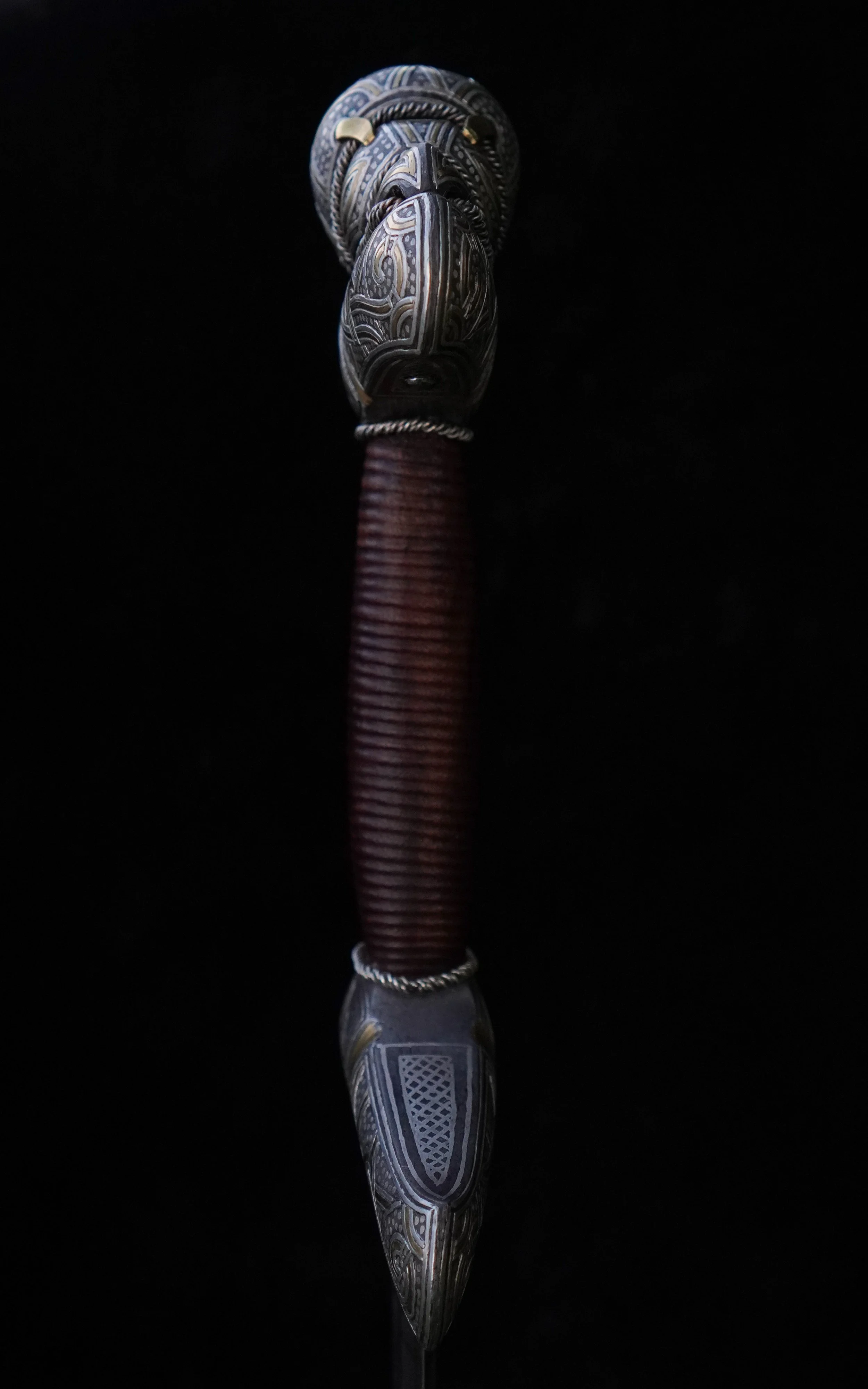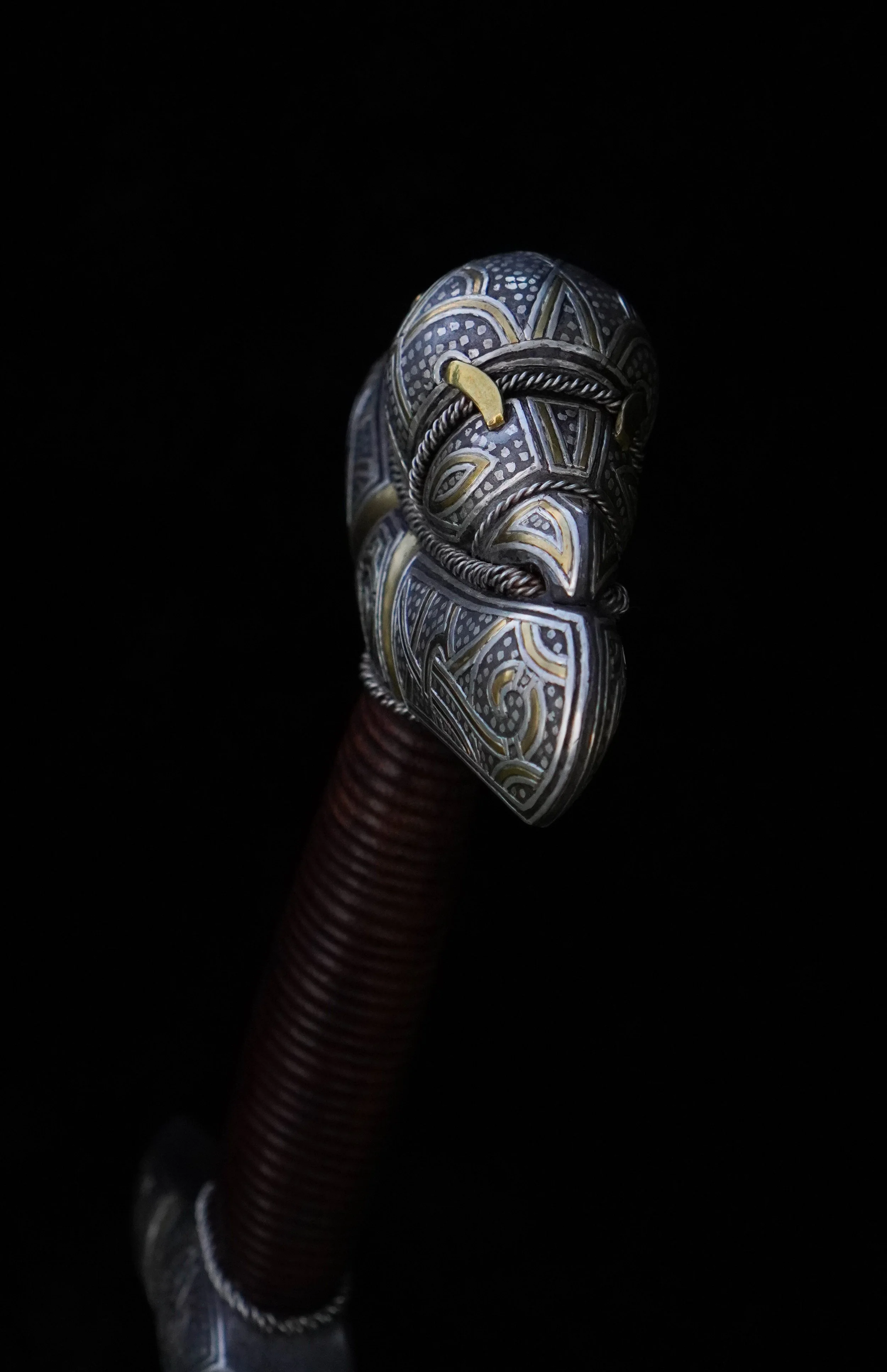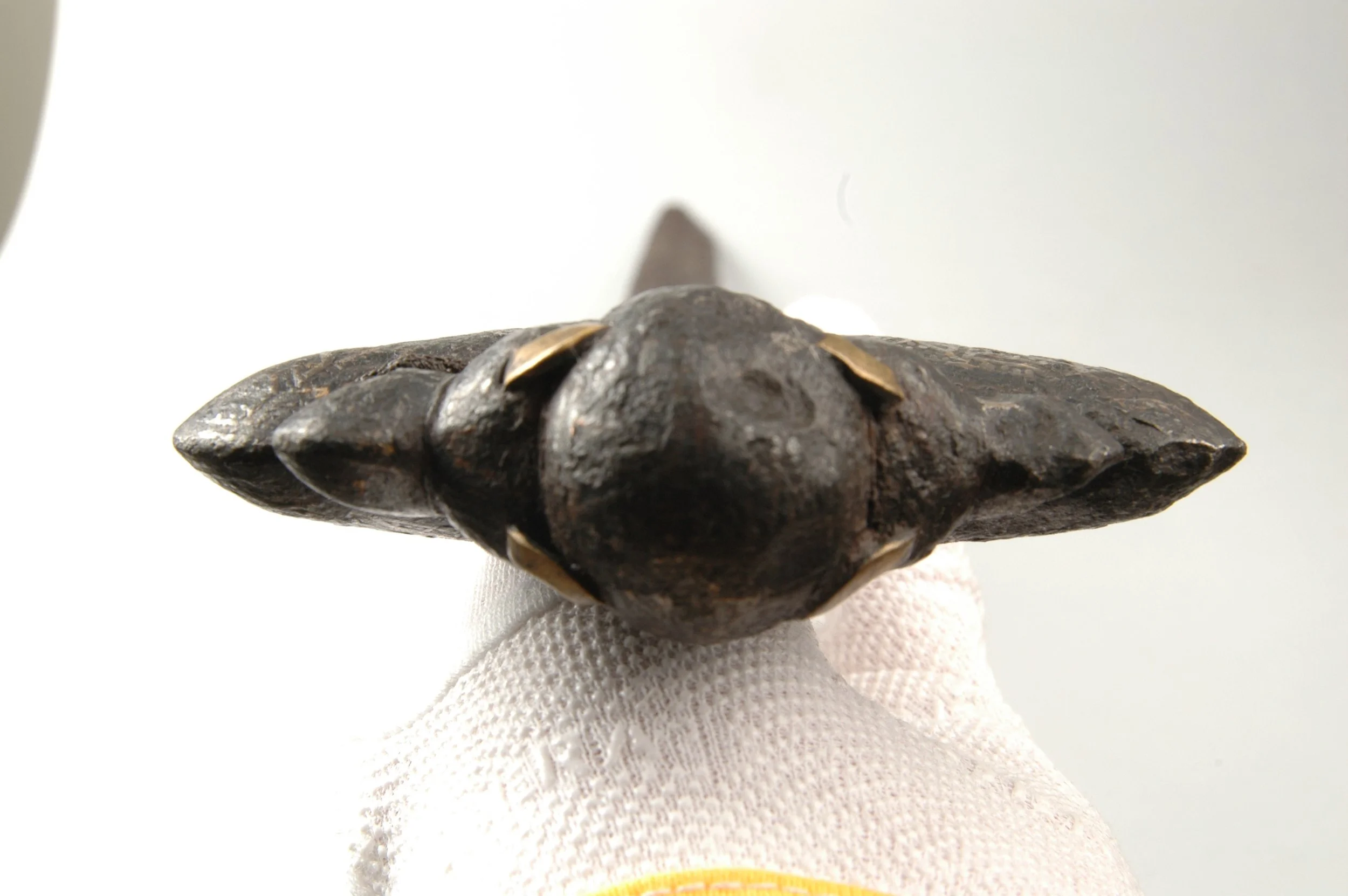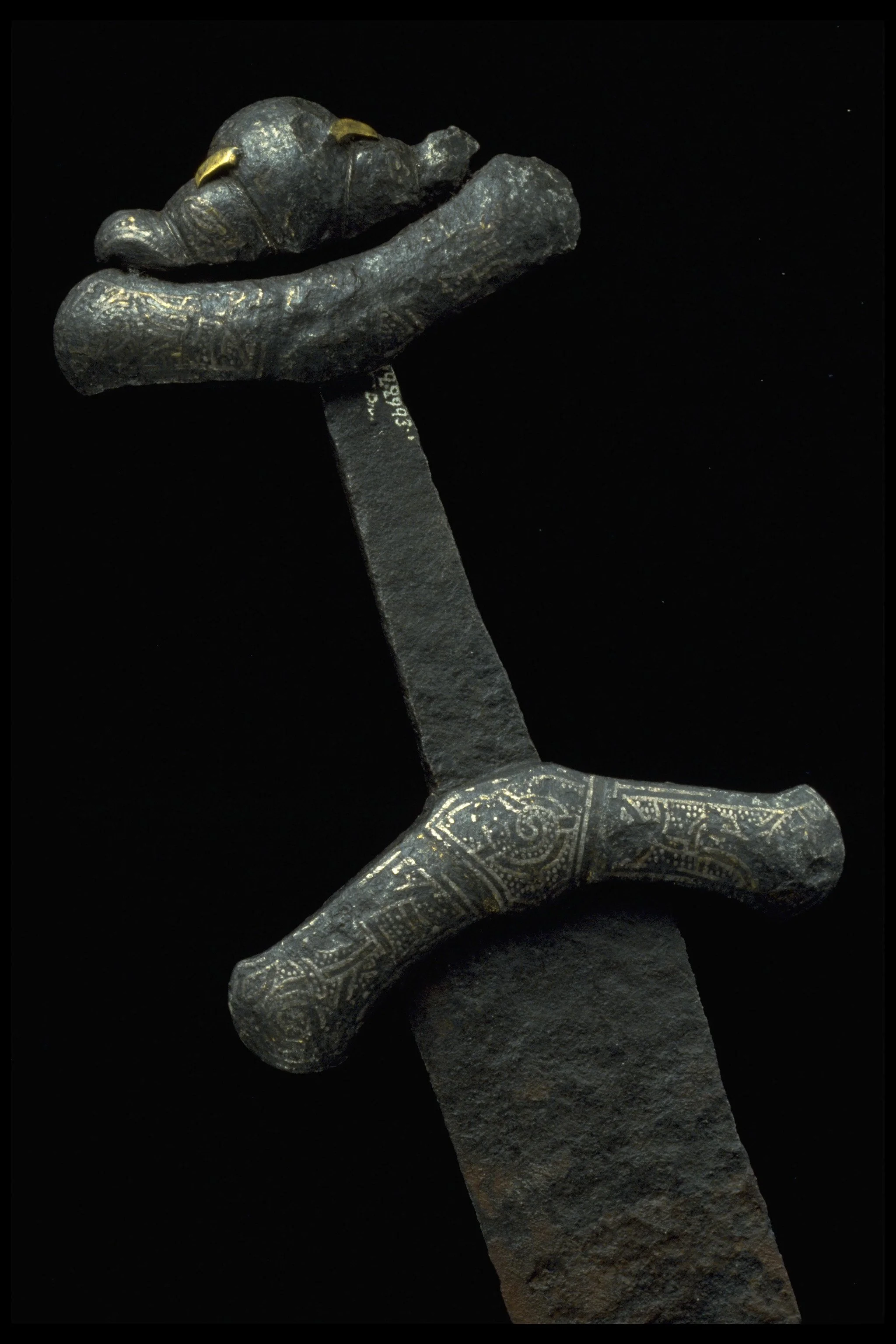The Dalarna Sword
Making OF
The making of this sword had proven to be a massive challenge straight from the beginning. As I over multiple days tried to digitally reconstruct the decorations of the sword, I had figured out that the supposed inlays were actually damascene overlays made up of not only silver, but brass aswell. This particular discovery was rather surprising, as none of the research papers I had read even mentioned brass as part of the element. Yet, it is clearly visible and spectroanalysis of a sister sword proved my suspicions.
While this discovery was thrilling, I was still largely unsure of the actual ornament which is mainly rusted away at this point. Over a quite extensive digital examination, I was however able to piece the parts of the puzzle together. I had noticed that the decorations of the sword guards consist of three repeating patterns. The centre scroll and two motifs at the sides of the guards. Knowing that each motif was essentially repated four times, I was able to precisely and confidently recreate the ornament just like it would have been on the original sword. The pommel, while upon closer examination and literature references shows more than meets the eye, had to be reconstructed from scratch in pieces. At this point of my research I was quite confident with understanding the art style of this sword and managed to fill the blanks.
After this point I was able to recreate the blade. Most notably, the sword blade only took roughly 10% of the time spent making the whole piece. The absolute vast majority was spent on incrusting the fittings with the decorations.
Origin, artstyle and more swords?
Since the substantial research of the sword took me down a bit of a rabbit hole, I started delving deeper into the origin of this sword. “Where was it made?” was my most pressing question. Mainly for the fact that I had never seen such an art style on a viking age sword ever before. While it may at first glance look ordinary, the rules and compostion of the ornament lead me to think that the original maker might not have been a norseman and, instead, tried mimicking the artstyle with impeccable technique. The tendrils, composition and rules under which this motif was constructed simply cannot be attributed to any of the commonly known and used viking age styles. Yet, at the same time, the sword had been made using a damascene overlay method, only fit for the very best artifacts of the time.
All this boggled my mind for quite the while. Until I found more swords that looked almost identical. Namely the Norwegian sword found in Altevatn, Bardu, the Bulgarian sword found in Gradesnica and two specimens found in Poland, Bodzia. The Polish swords are not as similar in style as the other two, but follow the very same ornament rules. This spread of swords, seemingly all over Northern and Eastern Europe alongside the unnatural looking ornament and use of brass leads me to believe the original sword was made somewhere in the Baltic region. However, take this with a heavy grain of salt as I am by no means a researcher, just a maker. If you know more about this topic, please contact me.
As previously mentioned, the ornament consists of a scroll “held in place” with silver clamps in the middle of both guards, two opposite direction scrolls on each side of the guard, U shaped endings in each corner of each guard and approximately 5 seemingly random, yet repeated lines on both sides of the guard. The pommel features two bird heads with solid brass “eyebrows” holding in place the larger twisted wire of the pommel. The middle of the pommel is largely geometric. Since the sword is depicted with a twisted silver wire ring around the handle in original documents from decades ago (no longer on the blade as of now), I assumed it might have been a part of the handle and replicated it as such on both sides. The scabbard is made of laminated wood sheet, wool, linen wrapping and leather covering. The fittings feature thousands of inlaid silver dots.
Close-up picture clearly showing the presence of brass in the ornament
Bonnevier, Helena, Historiska museet/SHM (CC BY 4.0)
Photos of the Original
Toplak, Matthias, Historiska museet/SHM (CC BY 4.0)
Hildebrand, Gabriel, Historiska museet/SHM (CC BY 4.0)
Anställd vid SHM, Historiska museet/SHM (CC BY 4.0)
Toplak, Matthias, Historiska museet/SHM (CC BY 4.0)
